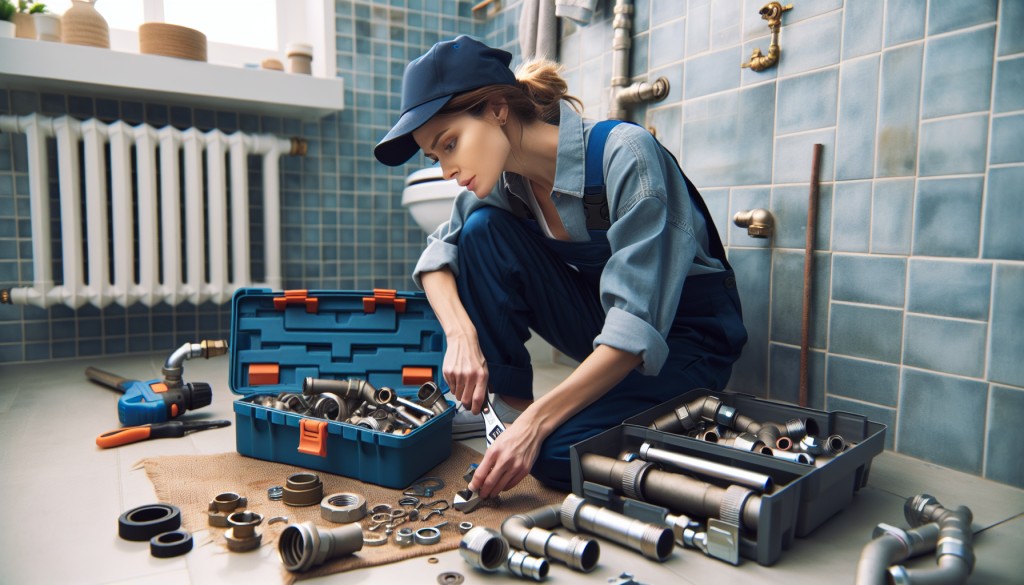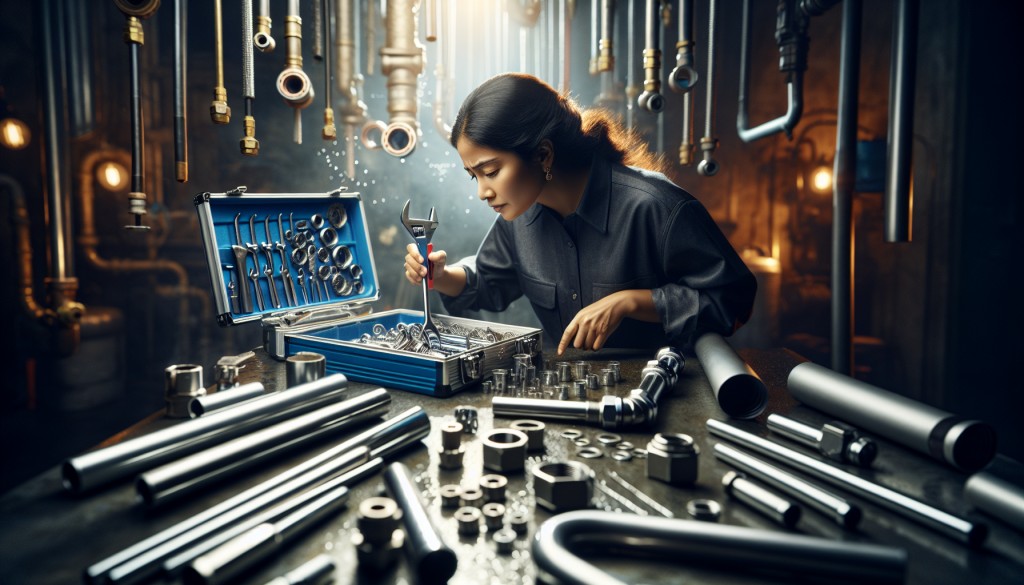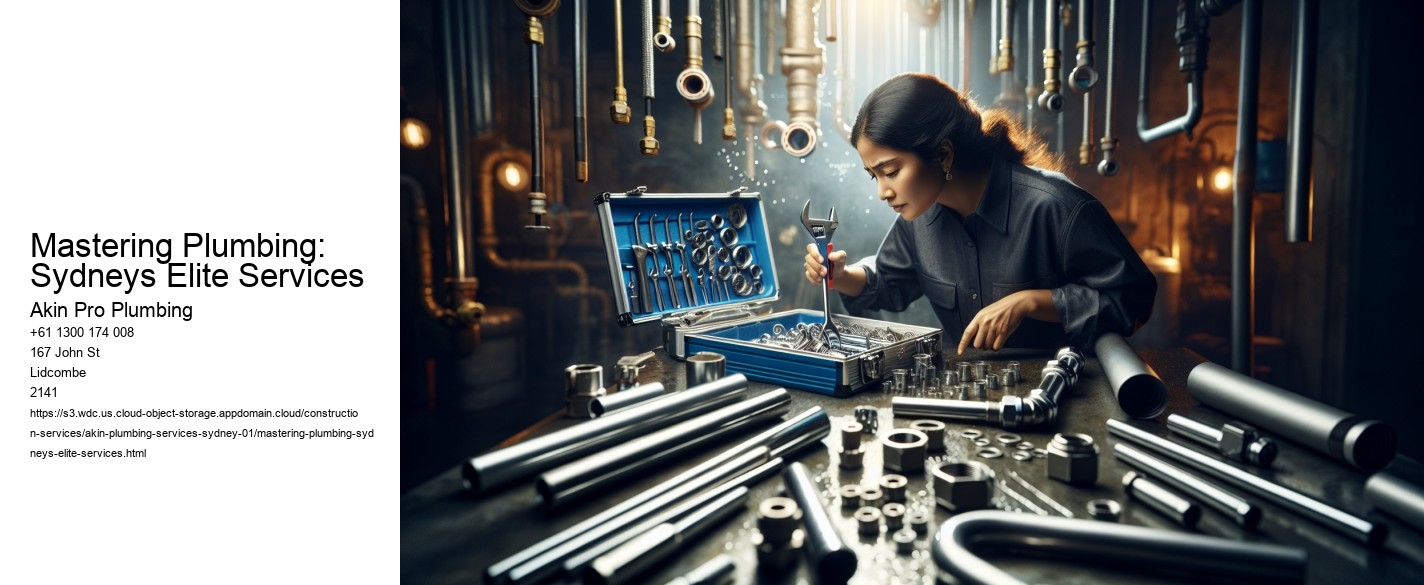Advanced Techniques for Leak Detection
In the bustling metropolis of Sydney, where the skyline is a tapestry of modern architecture and historic charm, the importance of maintaining the citys infrastructure cannot be overstated. Before Itrs Too Late: Sydney Plumbing Tips . Among the myriad services that keep this vibrant city functioning smoothly, plumbing stands out as a crucial component. One of the key challenges in plumbing is leak detection, a task that has evolved significantly over the years with the advent of advanced techniques. Mastering these techniques is essential for any elite plumbing service aiming to provide top-notch solutions in Sydney.
Leak detection, at its core, is about identifying and addressing water leaks in a timely and efficient manner. In a city like Sydney, where water conservation is a priority due to variable water levels and environmental concerns, the significance of prompt leak detection cannot be underestimated. Traditionally, leak detection relied heavily on manual inspections and intuition, often leading to invasive and time-consuming processes. However, with the advancement of technology, plumbing services in Sydney have embraced more sophisticated methods to enhance accuracy and efficiency.
One such advanced technique is the use of acoustic sensors. These sensors are designed to detect the sound of water escaping from pipes, which often produces a distinct acoustic signature. By deploying these sensors at various points along the plumbing system, plumbers can pinpoint leaks without the need for extensive excavation. This not only saves time but also minimizes disruption to homes and businesses, preserving the structural integrity of properties.
Another cutting-edge method is thermal imaging. This technique involves using infrared cameras to detect temperature variations caused by leaking water. As water escapes from pipes, it often changes the temperature of the surrounding area, creating a thermal footprint that can be captured by these cameras. Thermal imaging is particularly effective in identifying leaks hidden behind walls or under floors, where traditional methods might struggle to reach.
Furthermore, the integration of digital technology into plumbing has facilitated the use of smart leak detection systems. These systems employ sensors connected to the internet, allowing real-time monitoring of water flow and pressure. Any anomalies are immediately reported to both the plumber and the property owner, enabling rapid response to potential leaks. This proactive approach not only prevents significant water loss but also reduces the risk of water damage, which can be costly to repair.
Mastering these advanced techniques requires a combination of technical expertise and a commitment to continuous learning. In Sydney, elite plumbing services invest in regular training and upskilling of their workforce to keep pace with technological advancements. They understand that in a competitive market, excellence is achieved through a blend of traditional craftsmanship and modern innovation.

In conclusion, the realm of leak detection has transformed dramatically with the introduction of advanced techniques. For Sydneys elite plumbing services, mastering these methods is not just about staying ahead of the curve; its about providing reliable, efficient, and environmentally conscious solutions. As the city continues to grow and evolve, so too must the services that sustain it, ensuring that Sydney remains a beacon of progress and sustainability in the world of urban living.
Innovative Solutions for Water Heater Installations
In the bustling metropolis of Sydney, where modernity meets tradition, the plumbing industry is undergoing a transformation that is as dynamic as the city itself. Among the myriad of services offered, water heater installations stand out as a critical component in ensuring comfort and efficiency in both residential and commercial properties. The key to mastering this essential service lies in the adoption of innovative solutions that not only address immediate needs but also anticipate future demands.
Water heaters, once simple devices, have evolved significantly over the years. Today, they are sophisticated systems that require expert handling and a deep understanding of the latest technologies. Sydney's elite plumbing services have risen to the challenge, embracing innovation to provide superior water heater installations that meet the highest standards of quality and sustainability.
One of the most significant advancements in water heater technology is the integration of smart systems.
Mastering Plumbing: Sydneys Elite Services - Chartered Institute of Plumbing and Heating Engineering
- Plumbing & Drainage Institute
- Air gap (plumbing)
- Sink
- Chartered Institute of Plumbing and Heating Engineering
- Flushing trough
- pipe wrench
Another innovative solution gaining traction is the use of tankless water heaters. Unlike traditional models that store hot water, tankless heaters provide hot water on demand, eliminating the need for a bulky tank. This not only saves space but also reduces energy waste, as water is heated only when needed. British Standard Pipe Sydney's top plumbing services are adept at recommending and installing these systems, tailoring solutions to fit the unique requirements of each property.

Sustainability is another critical aspect of modern plumbing solutions. With water conservation becoming increasingly important, Sydney's plumbers are leading the way by promoting the use of solar water heaters. These systems harness the abundant Australian sunshine to provide an eco-friendly alternative to conventional heating methods. By investing in solar technology, homeowners can significantly reduce their reliance on non-renewable energy sources while enjoying lower utility bills.
Moreover, Sydney's elite plumbing services understand the importance of staying ahead of industry trends and continuously educating their workforce. Regular training sessions and workshops ensure that plumbers are well-versed in the latest installation techniques and safety protocols. This commitment to professional development guarantees that customers receive service that is not only innovative but also reliable and safe.
In conclusion, mastering the art of water heater installations requires more than just technical skill; it demands a forward-thinking approach that embraces innovation and sustainability. Sydney's leading plumbers are at the forefront of this evolution, offering solutions that are tailored to meet the needs of today while preparing for the challenges of tomorrow. By prioritizing smart technology, energy efficiency, and ongoing education, they are setting new standards in the plumbing industry and ensuring that Sydney remains a beacon of excellence in modern living.
Sustainable Plumbing Practices in Sydney
Mastering Plumbing: Sydneys Elite Services and Sustainable Practices

In the vibrant cityscape of Sydney, where the iconic Harbour Bridge and Opera House paint a picture of modernity and tradition, the plumbing industry is undergoing its own transformation. The concept of sustainable plumbing practices has taken center stage, becoming an essential component of what it means to deliver elite plumbing services in this bustling metropolis. As environmental concerns grow and urban populations swell, Sydneys plumbing professionals are rising to the challenge by integrating eco-friendly practices into their daily operations.
Sustainable plumbing practices in Sydney are not merely a trend but a necessary evolution in the industry. With water scarcity and environmental degradation posing significant threats, plumbers in Sydney are adopting innovative solutions to conserve water and reduce waste. From the installation of water-efficient fixtures to the implementation of rainwater harvesting systems, these practices are designed to minimize the environmental footprint of both residential and commercial properties.
One of the key aspects of sustainable plumbing is the use of advanced technology. Smart plumbing systems, for instance, allow for real-time monitoring and control of water usage, helping to identify leaks and inefficiencies before they become major issues. Chartered Institute of Plumbing and Heating Engineering By integrating such technologies, Sydneys plumbers not only enhance the sustainability of their services but also offer clients the benefit of reduced utility bills and improved water conservation.
Moreover, the choice of materials plays a crucial role in sustainable plumbing. Plumbers are increasingly opting for materials that are durable, recyclable, and environmentally friendly. For example, cross-linked polyethylene (PEX) piping, which is both long-lasting and less harmful to the environment, is becoming a popular choice over traditional materials. This shift not only ensures the longevity of plumbing systems but also contributes to the broader goal of sustainability.
Education and training are also pivotal in mastering sustainable plumbing practices. Sydney's elite plumbing services prioritize continuous learning, ensuring that their workforce is equipped with the latest knowledge and skills in eco-friendly techniques. This commitment to professional development ensures that plumbers are prepared to implement the most effective sustainable solutions for any project, regardless of its complexity.
Furthermore, collaboration within the community is essential for promoting sustainable plumbing practices. By working closely with local governments, environmental organizations, and other stakeholders, plumbers can advocate for policies and initiatives that support water conservation and sustainable development. This collective effort not only enhances the reputation of Sydneys plumbing industry but also contributes to the citys overall sustainability goals.
Mastering Plumbing: Sydneys Elite Services - British Standard Pipe
- Piping and plumbing fitting
- Sewer gas
- British Standard Pipe
- Wastewater
In conclusion, mastering plumbing in Sydney today means more than just fixing leaks and installing pipes. It involves a comprehensive approach that integrates sustainable practices at every level. As Sydney continues to grow and evolve, its elite plumbing services are setting a benchmark for environmental responsibility in the industry. By embracing sustainable practices, these professionals are ensuring that Sydney remains a leader in both urban development and environmental stewardship, protecting the citys resources for generations to come.
Emergency Plumbing Services: What to Expect
When it comes to the intricacies of home maintenance, plumbing often takes a backseat until an emergency arises. In Sydney, a city renowned for its vibrant lifestyle and fast-paced environment, the need for reliable emergency plumbing services is paramount. Mastering plumbing is not just about fixing a leaky faucet; its about understanding the complexities of an entire system and being prepared to tackle any issue that arises. Sydneysiders have come to rely on elite plumbing services that promise efficiency, expertise, and excellence, particularly during emergencies.
Emergency plumbing services in Sydney are designed to address urgent issues that, if left unattended, could lead to significant damage and costly repairs. The most common emergencies include burst pipes, blocked drains, and malfunctioning water heaters. When water begins to pool where it shouldnt, or when a drain refuses to clear, quick and professional intervention becomes imperative. This is where Sydney's elite plumbing services come into play.
One can expect several key elements when engaging with emergency plumbing services in Sydney. First and foremost is the availability. Top-tier plumbing services operate around the clock, understanding that plumbing emergencies dont adhere to a 9-to-5 schedule. The assurance that help is just a phone call away, regardless of the time, provides peace of mind to homeowners and business owners alike.
Moreover, another crucial component is the expertise of the plumbers. Sydney's elite services employ highly trained professionals who are not only skilled in traditional plumbing techniques but are also adept at using the latest technology. This includes advanced diagnostic tools that allow for swift identification of the problem, reducing the time and disruption typically associated with plumbing repairs. The use of technology, combined with years of hands-on experience, ensures that solutions are both effective and long-lasting.
Furthermore, transparency and communication are vital aspects of emergency plumbing services. Sewer gas From the moment a call is made, clients are kept informed about the expected arrival time, the nature of the problem, and the proposed solutions. This level of communication builds trust and assures customers that they are in capable hands. Additionally, elite services often provide clear and upfront pricing, eliminating any unpleasant surprises once the job is complete.
Finally, the commitment to customer satisfaction sets Sydney's plumbing services apart. Mastering plumbing goes beyond technical proficiency; it involves delivering a positive customer experience even in the most stressful situations.
Mastering Plumbing: Sydneys Elite Services - British Standard Pipe
- Air gap (plumbing)
- Sink
- pipe wrench
- Plumbing
- Tubing
In conclusion, emergency plumbing services in Sydney exemplify what it means to master the craft. Through availability, expertise, communication, and a commitment to customer satisfaction, these elite services provide indispensable support to a city that demands nothing but the best. For Sydneysiders facing plumbing emergencies, knowing that there are skilled professionals ready to assist at any moment transforms a potentially daunting situation into a manageable one.



















